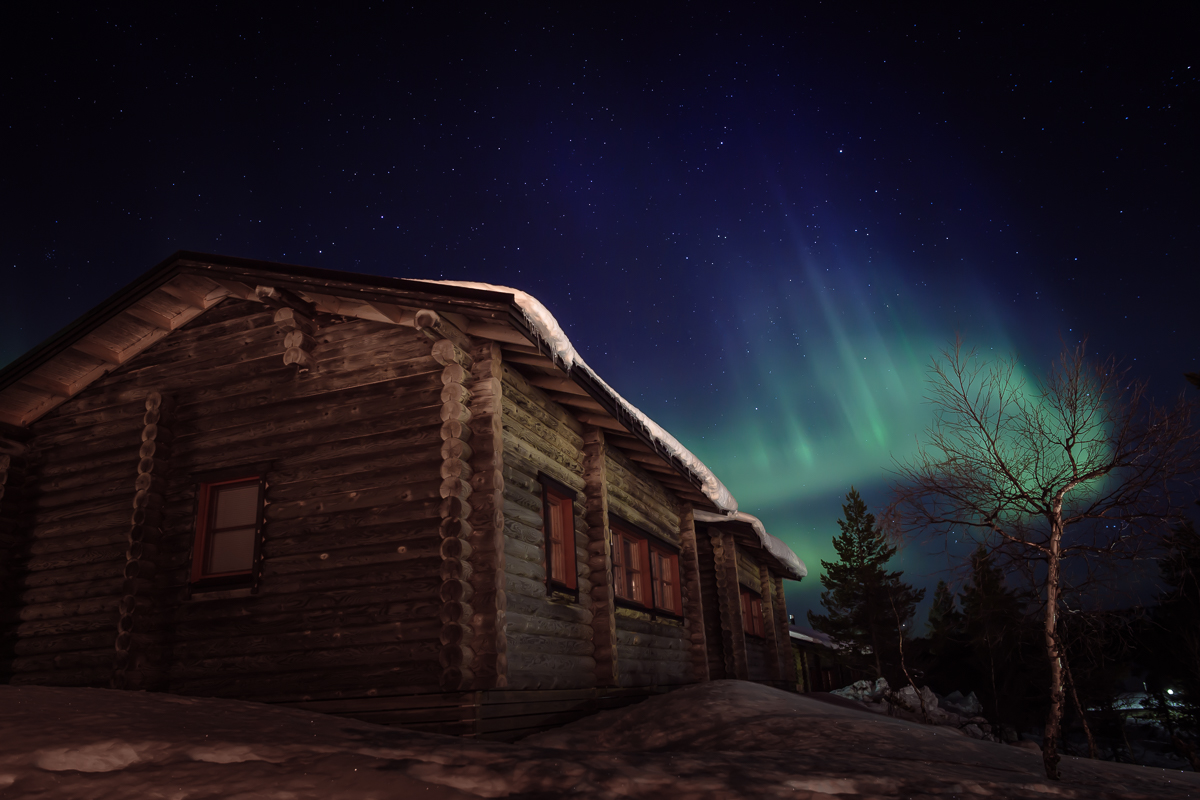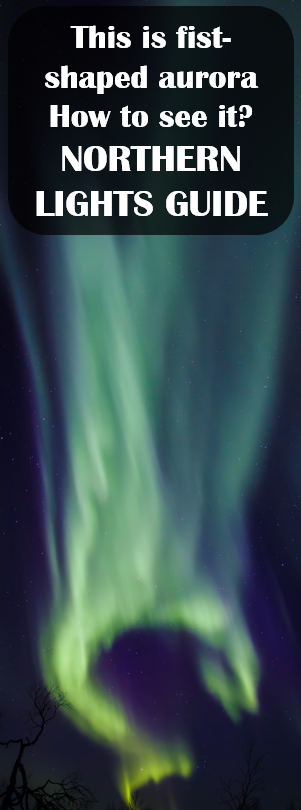While there is never a guarantee to see the Northern lights, you can highly increase your chances. Here I would give some recommendations and links that can help in planning your aurora hunt. You will know where to see the Northern lights, a tracker app, and websites to monitor the activity. In the end, I provide some photo tips.
“Oh Northern Lights! They are so beautiful”
“I’m sorry, this is MCdonalds behind the trees, it gives the flare”
(a conversation between Finnish and Spanish students, after reading the post you would not make the same mistake)
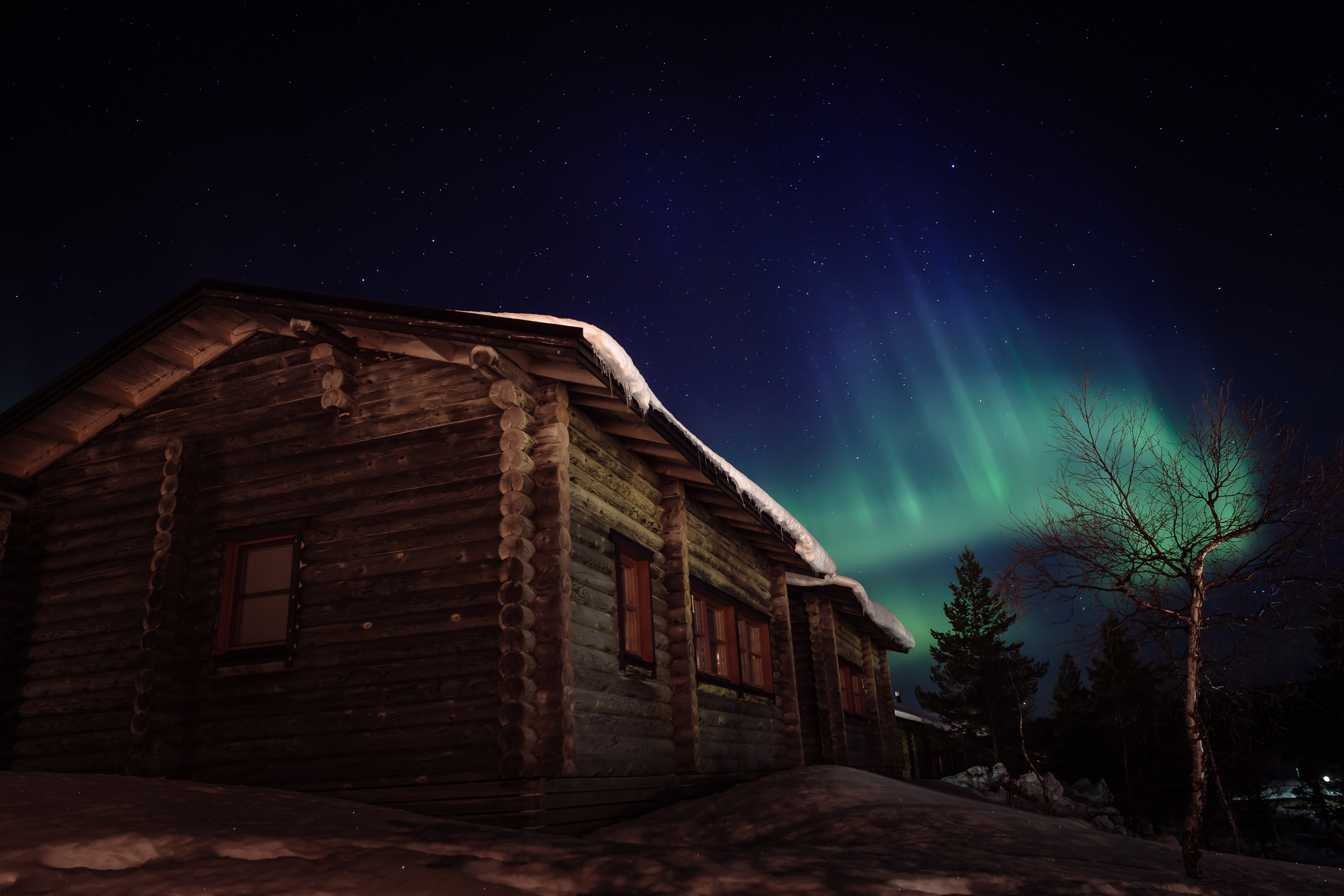
Table of Contents
1. Choose a location for Northern Lights
Northern lights, where to see them? The basic rule is closer to the north magnetic pole – the better. You have to be in the Arctic Circle. Therefore the best spots are in the North of Scandinavia, Iceland, Finnish Lapland, and Northern Canada.
When choosing the location, remember that the climate in the Nordic countries is affected by Gulfstream. The difference in temperatures between the shoreline and the middle of the land is significant. You may need to wait for the Northern Lights for hours, so from the temperature point of view, Northern Norway and Iceland are the most convenient locations.
But, coastal areas have maritime climates and although warmer, are more prone to storms and cloudy skies. A professional Aurora photographer recommended Asbiko, a village in Sweden:
If you want to give yourself the best chance in Europe then Abisko is the place to head – it has a far higher success rate because of its record of clear skies due to the microclimate on Lake Tornetrask.
I would say if you plan a week-long trip, Iceland and Northern Norway are fine, they have much more things to to do, besides Northern Lights. But if you have a limited time, places away from the coast are better.
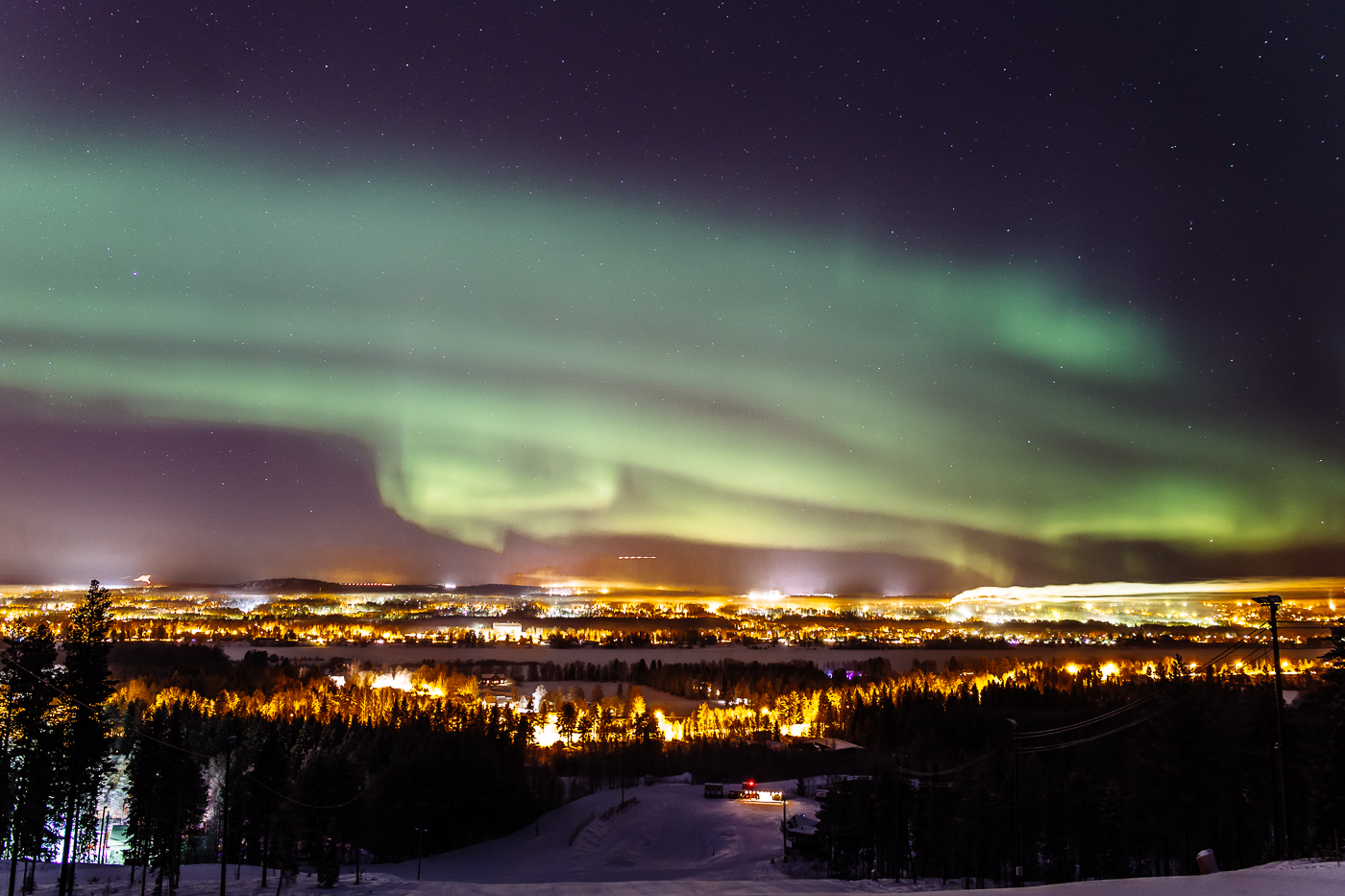
2. Choose the time of the year
Now let’s find out when to see Northern lights. The Northern Lights, as phenomena, happen throughout the whole year, but to actually see them, the night has to be dark. Summer nights in the North are bright, which limits us only to the period from late autumn to early spring. The higher to the North – the longer this period is.
It is a very common myth, that the Northern Lights appear only in winter. It could be an accident, but I was more lucky in seeing them in spring, rather than in winter. Also, spring is warmer!
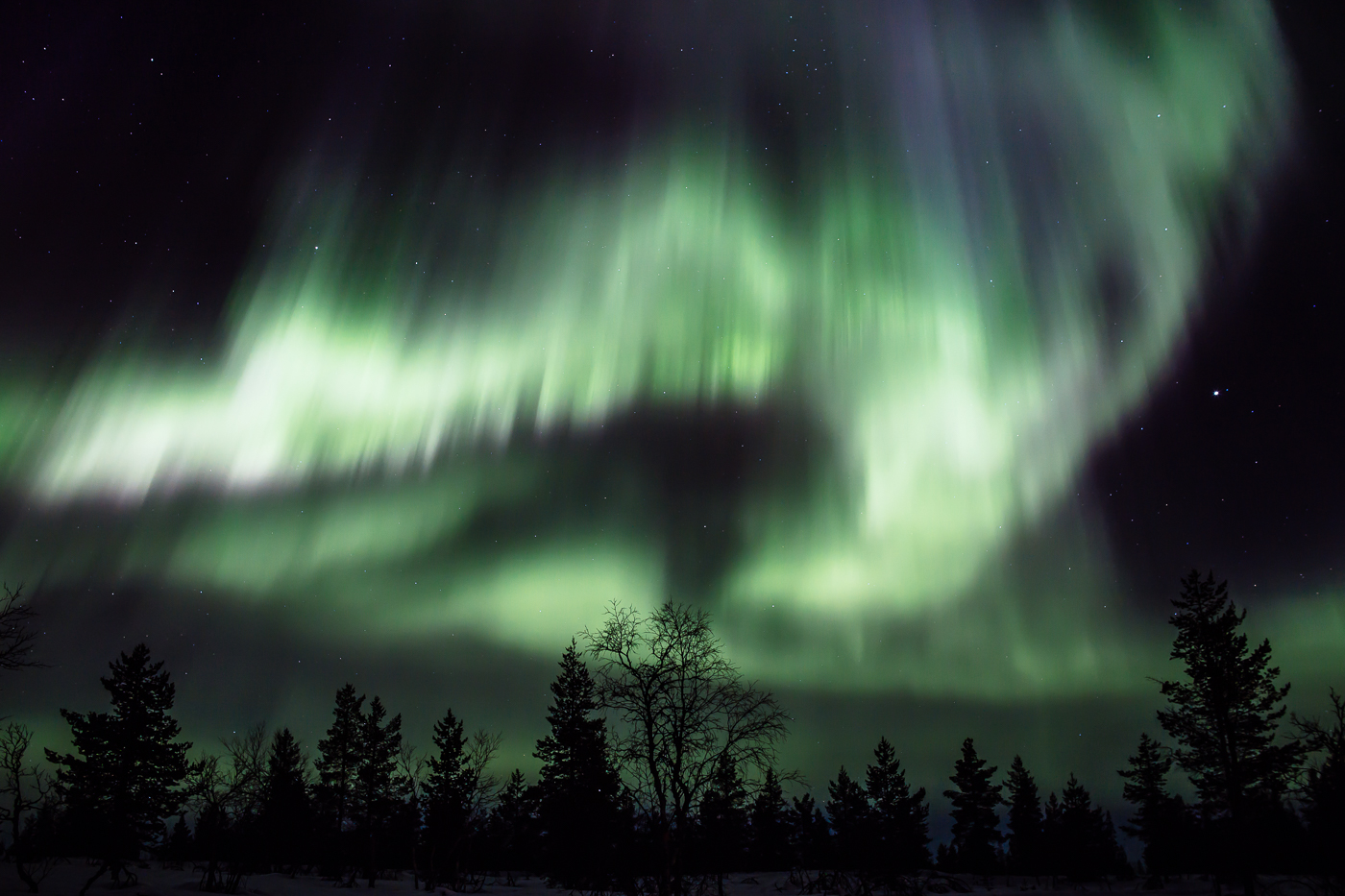
3. Check the Northern lights activity forecasts
Each night, the activity of the Northern lights is different. The level of the Northern lights is measured from 1 to 9. It affects two things:
- The larger the number – the brighter the lights would be
- The larger the number – the more they expand to the South
Online services display the current level of the Northern Lights, the short-term forecast (hours), the long-term forecast for several days. Here are some resources that can help you:
Aurora Service
They have a nice way of displaying the current and short-term activity, and also the website works well on mobile devices.
In addition, they have a page with the web-cameras, that picture Northern lights in different parts of the world.
University of Alaska, Geophysical Institute
Shows basically the same information, I just found it easier to look for long-term forecasts.
Mobile apps: Northern lights tracker app
In popular tourist destinations, you can use special apps to help to see the aurora. The idea is simple. If someone sees the lights – they make a notification. Other people who have the app are notified and see the position on the map where notification was made. They may add likes to your notification (so really bright ones collect more) or alternatively can inform that they didn’t see anything.
Check the app stores for: “<your location name> aurora”, or something similar. In the tourist offices, they can inform you about applications.
Northern lights alert Facebook group
In this northern lights alert group, people post notifications about the Northern lights. You can also ask questions and share photos.
For Aurora alert in Finland use this group.
4. Check the weather for clouds
It doesn’t matter how bright the lights are – you would not see them if the sky is covered with clouds. So always check the weather forecast before you go.
In addition to “general” weather forecast, take a look at the clouds map (for example this one). It would show the open spaces. You may choose the place in advance and drive there.
5. Be aware of bright artificial light
Avoid artificial lights! To see the lights you have to be in complete darkness. When your eyes are used to the dark – you can see aurora better, in more colors and details.
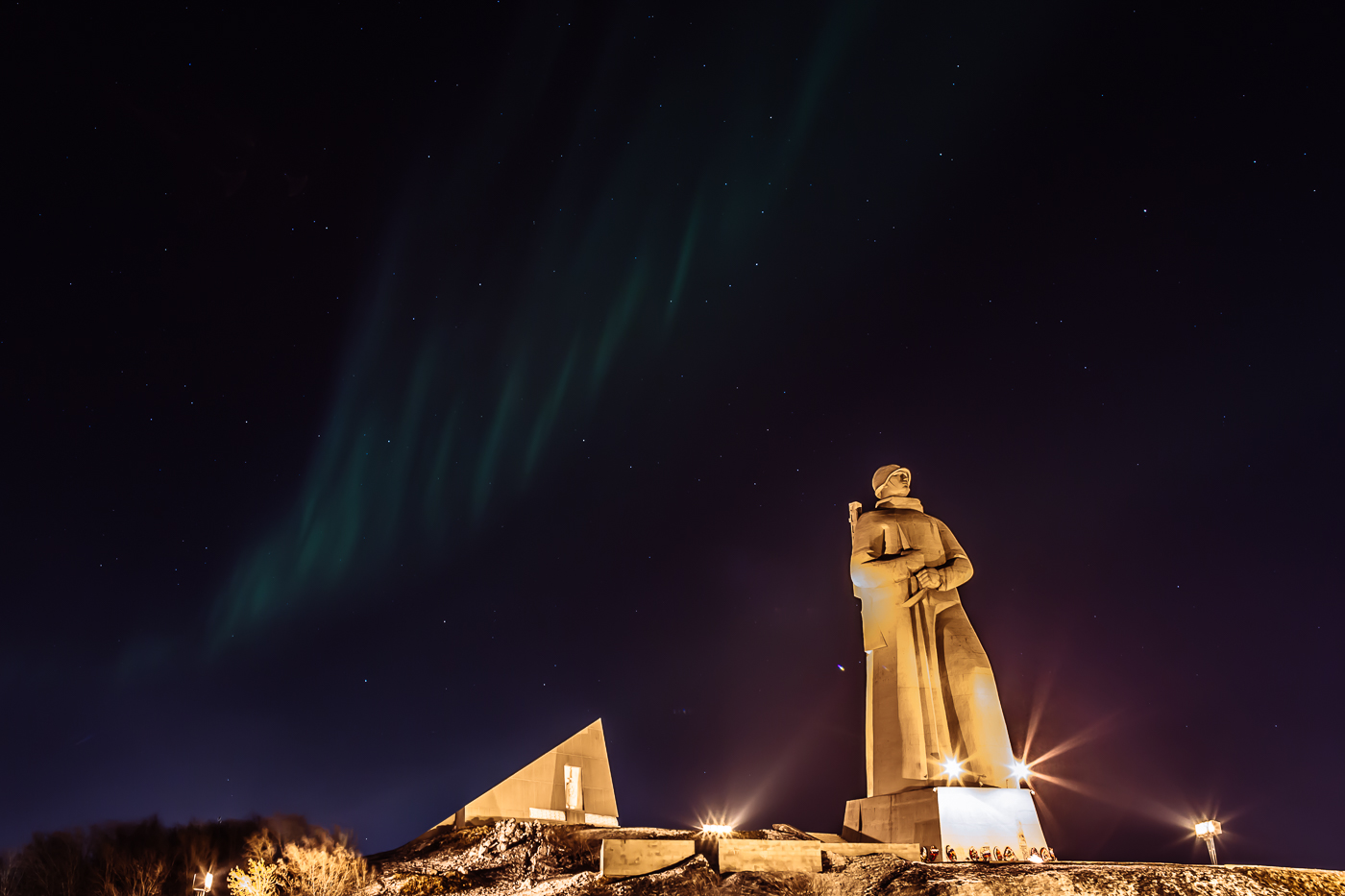
Northern lights in Finland
Many ask me if Finland is the best place to see the Northern lights? I would say, the best chances are far on the North of Lapland.

With activity 2, Iceland and Norwegian Tromso are covered fully, but Finland only on the far North of Lapland. Rovaniemi – the capital of Finnish Lapland is not covered.
Northern Lights in Canada
In the North of Canada the best time of year to see the Northern Lights is winter where temperatures can hit a bone-chilling -40°C so you will need to bundle up there as well. But like in Lapland, if you’re able to brave the cold you will be rewarded. With long nights, clear skies, and a latitude of 62°, Yellowknife is one of the best cities to view the northern lights in Canada. Indeed, the Northern lights are visible on average 240 nights of the year in Yellowknife.
And finally, Northern lights photo tips (briefly)
As I was asked it a few times, here are basic Northern lights photo tips. First of all, you would need a fast, wide angle lens, and a tripod. Is it possible without? Yes, I have done few shots with a kit lens and by putting a camera on top of a backpack at an angle (instead of a tripod). But the photo wouldn’t be of good quality (but enough for small web illustrations ).
-
- Set your camera to manual mode, keep ISO as AUTO
- Set aperture wide open or close (I usually don’t go over f/2.8)
-
- Depending on the nature of the lights – set the shutter speed
-
- If they are still – set it to 10-25 seconds
- If they are moving set the to 4-10 second
-
- Depending on the nature of the lights – set the shutter speed
-
- Note the auto ISO value and take the test picture
- Set the ISO value lower and test again, until the photo is properly exposed
Note a couple of things:
- The image preview in the dark looks a bit brighter than it actually is
- Set the timer for 2 seconds before the shot, it would reduce the shake when you press the shutter
Wish you a great aurora hunt! With a bit of luck and planning, you would be able to see and photograph them.

Join my community!
I love working on Engineer on tour, but it is a time-consuming thing to make. I am always improving and trying to bring you the best from photography and travel.
Currently, my main platform is my Facebook Photo Page. I will be happy to see you among my followers’ families and engage in a friendly discussion. Let me know how I’m doing and feel free to suggest some topics to write about.
You can also find me on other social media: FACEBOOK 2 (blog updates only) / TWITTER / INSTAGRAM / INSTAGRAM 2 (only Finland) / PINTEREST

